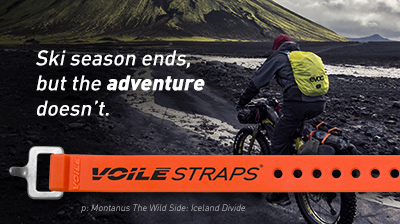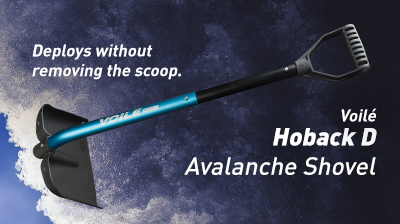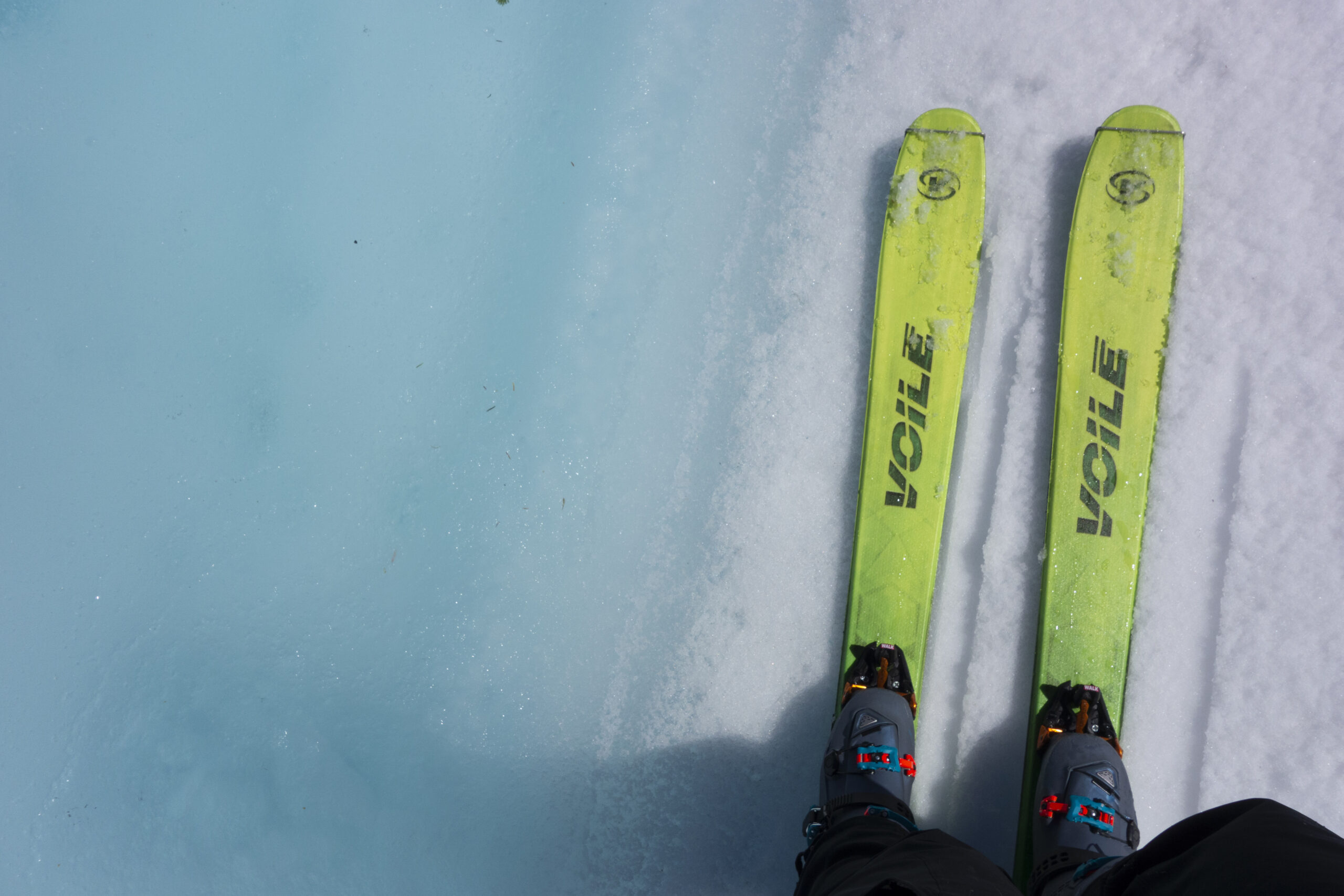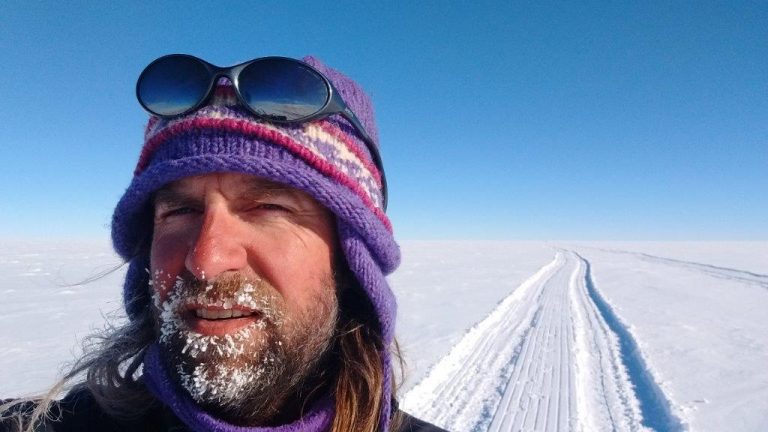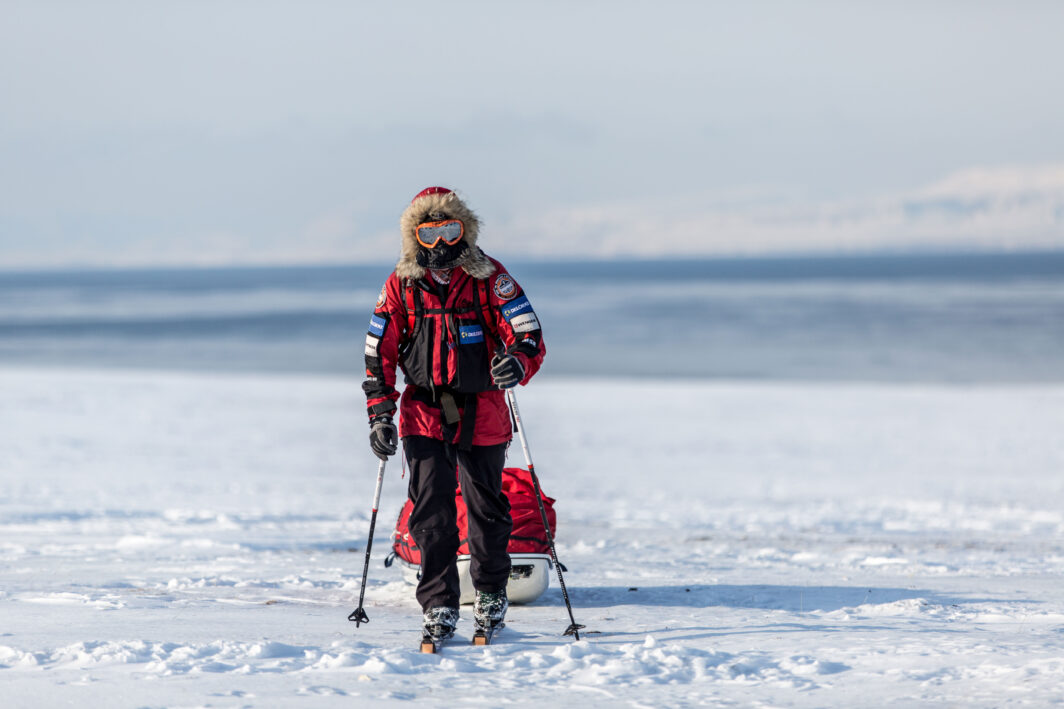
Adapting to Antarctica
“I’m writing this email with a heavy heart and tired legs. I have been pushing south towards the pole for three weeks now and have, unfortunately, reached the end of my ability to continue.” -Eric Larsen
Cover photo by Eric Larsen Explore.
Share this Post
Desolate amongst the vast frozen tundra of Antarctica,
Polar Explorer Eric Larsen huddles in his tent. Each word and thought hangs heavy with exhaustion. Existing amongst the icy void at 86-degrees south, on December 18th, 2018, Larsen reluctantly abandons hope of conquering the 1,130-kilometer solo ski speed record from the Hercules Inlet to the South Pole.
Surrounding his basecamp, warm winds howl across the snowy ground, altering the alien landscape with dramatic, elongated snowdrifts known as sastrugi. An Arctic mist layers his tent, gear, and clothes, coating Larsen’s existence in a frozen, glass-like capsule. All views of the world are consumed by an endless, life-sucking void of white, leaving him utterly alone without a sense of time, place, or existence.
No stranger to the harsh continent, Larsen has spent over ten years exploring Antarctica. As a guide, his first objective was to reach the South Pole via the 901-kilometers Messner Route in November 2008. Since this original voyage, Larsen has successfully completed four South Pole expeditions and five total trips to Antarctica.
During his most recent objective to set the solo ski speed record to the Pole, Larsen suffered first-hand the altering Arctic landscape. Attempting to slog through unusually soft snow causes his skis to weigh heavy, and the duty of dragging his sled becomes arduous. After nearly 10-days in constant whiteouts and wet, deep snow conditions, the disappointing progress and diminishing food supply ultimately sabotage his objective.
The global impacts of climate change are widely anticipated; increased sea levels and erratic coastal weather causing people and animals to be displaced; warmer temperatures leading to lesser snowfall in some mountain regions; and so on. But what some may not realize is that many of these advised concerns are directly related to the vast and evolving climate of the polar regions, like Antarctica.
Cascading walls of ice shedding into the sea are the most common images showing how the glaciated regions of the Antarctic Peninsula are changing. For a long time, this dramatic visual was how researchers would go about grabbing the public’s attention and sharing the story of the Arctic. However, collecting data and monitoring glaciers is no easy task and the science is much more involved than receding glaciers. Yet the predicted impacts may never be fully understood until it is too late, especially with the subjects for collecting data literally melting away.
Enter NASA. In the 1990s, NASA started observing and documenting earth’s glaciated regions focusing on sea ice coverage using satellite and in-the-field data study. The recession of two glaciers at an alarming rate in the Antarctic Peninsula has caught their attention—the Thwaites and Pine Island.
According to NASA researcher Tom Neumann, “West Antarctica contains several meters of potential sea level rise… Pine Island Glacier and Thwaites are two of the most vulnerable glaciers in West Antarctica. If these glaciers continue to retreat, the consequences will take hundreds or thousands of years to unfold, and the impacts will last much longer than that.”
Yet the impacts are already beginning to be seen. Since the beginning of the 20th century, NASA has already observed a 20-centimeter rise in sea levels. And with ice loss from the poles being one of the most influential factors increasing sea levels globally, scientists predict it may rise by as much as .9 meters or more by the end of this century.
This is problematic for eleven of the world’s 15 most populated cities which lie along shorelines. The rise means the ocean will gradually inundate low-lying areas, while storms like hurricanes, bolstered by even higher sea levels, will extend their reach further inland. And the increase in a displaced population from the predicted effects of rising sea levels, as well as the damage to infrastructure, is a burden all society will experience. It is estimated that the annual losses from flooding in the world’s biggest coastal cities could rise from $6 billion a year to $1 trillion a year by 2050.
Observations of an ever-changing biome
Brooke out for a stroll on her Superchargers. Tom Neumann in the vast tundra. Click or hover on an image to expand.
To continue expanding their understanding of what is happening to the poles, NASA and Neumann’s team most recently launched a new satellite project known as ICESat-2. While this new project will continue to observe changes in ice sheets and sea levels, it is specifically adding a crucial new dimension; sea ice height and thickness.
This third dimension is vital for further developing NASA’s data and observations in the polar regions. Neumann explains, “Sea ice, particularly in the Arctic, regulates the exchange of heat and moisture between the ocean, which is warm, and the atmosphere, which is generally colder than the ocean in the Arctic. As this balance changes due to changes in sea ice extent, weather patterns around the globe are impacted.”
ICESat-2 aids Neumann’s team in measuring something called the snow water equivalent (the amount of water that falls as snow) which is a complicated interplay between water vapor transport and temperature changes. As the rain or lack of precipitation plays out, impacts are seen in snow, glaciers, and ice, such as in height and thickness. NASA hopes that by understanding this third dimension of climate temperature, it’ll further evolve our understanding of the altering frozen landscapes, and help to better predict the global impacts.
Neumann has so far gathered, “In some places, climate change has led to larger-than-expected seasonal snowfall, but over many areas, it has meant that either more water falls as rain, rather than snow, or that there has been less precipitation of any sort.”
For Canada, the impacts of a lowered snow water equivalent are already unfolding with an increase in wildfires contrasted by receding glaciers. A recent study performed by forest fire researcher Mike Flannigan unveils a smoky future, predicting “western Canada will see a 50% increase in the number of dry, windy days that let fires start and spread, whereas eastern Canada will see an even more dramatic 200% to 300% increase in this kind of ‘fire weather.’”
Though less visually riveting as videos of shattering glaciers or raging forest fires, Larsen’s South Pole endeavor serves as a direct doorway to experience the changes already occurring in Antarctica’s interior.
“This past season in Antarctica was one of the most unusual from a weather perspective that I have experienced.” Larsen reflects, “The weather this year has been my biggest adversary. The constant snow in this frozen desert has impeded my progress significantly…. Overall the temperatures were much warmer…. Also, an unusual amount of snow and snowstorms. Because of the warm weather and snow… not to mention the whiteouts—life sucking voids of nothingness.“
A Shifting Tundra
Typically, the impacts on the frozen tundra of central Antarctica unfold at a much slower pace. Larsen worries that the changes he witnessed on his recent expedition may be a dire sign that the clock is running out, “Over the last two decades there has been little change to the climate of Antarctica’s interior, however, I believe that we are getting close to a tipping point where weather patterns will shift dramatically.“
David Hik, an ecology professor at Simon Fraser University, has observed that Canada’s glaciers, are, too, reaching the same “tipping point.” Already the Peyto Glacier in the Rocky Mountains and part of Banff National Park has lost roughly 70% of its mass in the past 50 years, while Prof. Hik predicts that 80% of all the mountain glaciers in Alberta and B.C. will disappear in the next 50 years.
Additional concerns span from impacts on agricultural outputs to drinking water management and beyond. Yet one thing is clear; the effects of the warming climate, including receding glaciers to lower snow water equivalent and rising sea levels, will continue to reach further and further beyond glaciated polar regions.
As adventurers, explorers, and inhabitants of the planet; it’s time to take action. From continuing to educate on the issues to taking public transportation, or attending local activist events to writing politicians; it all makes a difference. We can make a difference. You can make a difference.
The clock is running out… what will you do?
Sidebar: NASA launched a mini-series on Youtube called ‘Cryosphere’ in which the episodes discuss multiple layers of climate studies that scientists are researching. As Neumann says, “I encourage anyone to trust the data, or better yet, check it out for yourself! There is perhaps nothing more powerful than a well-educated public.”
ABOUT THE AUTHOR

Location: Seattle, WA
Top Gear Picks: UltraVector 171cm / V8 176cm
Instagram: @wanderingtrailsmedia
Website: www.wanderingtrailsmedia.com
Brooke Jackson (she/her) is the founder of Wandering Trails Media, a media creation agency where she utilizes her storytelling skills to uplift the voices of others. Oftentimes, Brooke is behind the camera as a Photographer and Producer, yet is also known to scribble the occasion written feature. Outside of her professional endeavors, she is a volunteer with Olympic Mountain Rescue, as well as the Kitsap County Search Dogs with her Field Retriever, Eva.
Share this Post



